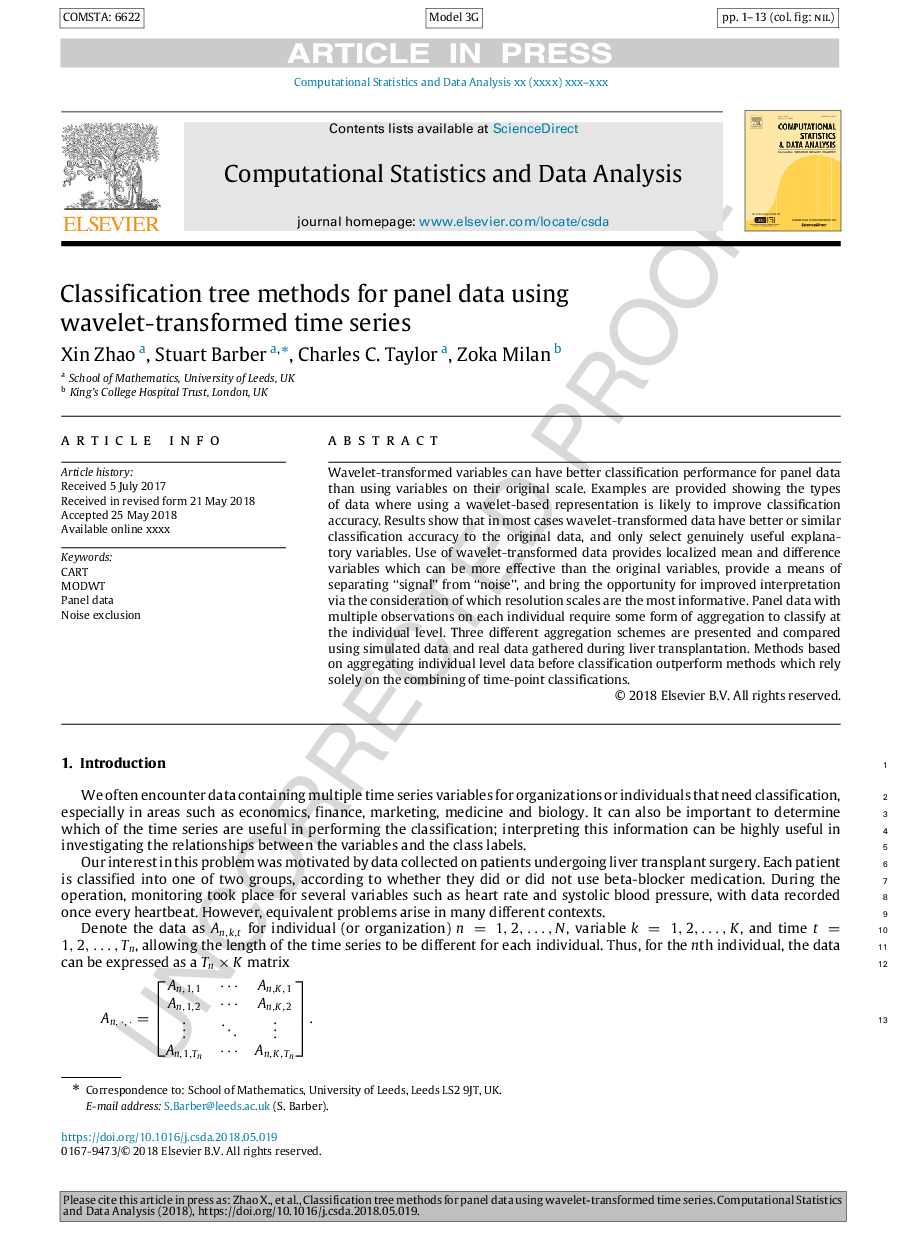| Article ID | Journal | Published Year | Pages | File Type |
|---|---|---|---|---|
| 6868628 | Computational Statistics & Data Analysis | 2018 | 13 Pages |
Abstract
Wavelet-transformed variables can have better classification performance for panel data than using variables on their original scale. Examples are provided showing the types of data where using a wavelet-based representation is likely to improve classification accuracy. Results show that in most cases wavelet-transformed data have better or similar classification accuracy to the original data, and only select genuinely useful explanatory variables. Use of wavelet-transformed data provides localized mean and difference variables which can be more effective than the original variables, provide a means of separating “signal” from “noise”, and bring the opportunity for improved interpretation via the consideration of which resolution scales are the most informative. Panel data with multiple observations on each individual require some form of aggregation to classify at the individual level. Three different aggregation schemes are presented and compared using simulated data and real data gathered during liver transplantation. Methods based on aggregating individual level data before classification outperform methods which rely solely on the combining of time-point classifications.
Keywords
Related Topics
Physical Sciences and Engineering
Computer Science
Computational Theory and Mathematics
Authors
Xin Zhao, Stuart Barber, Charles C. Taylor, Zoka Milan,
